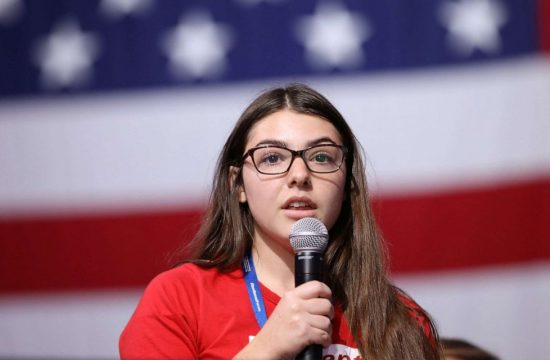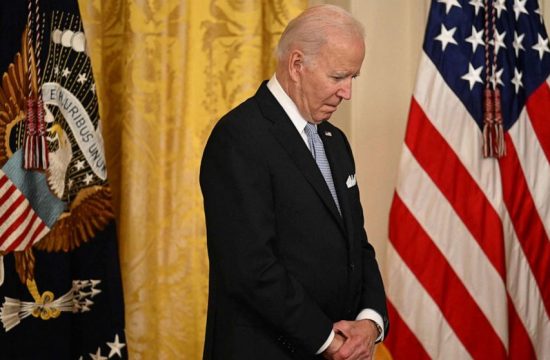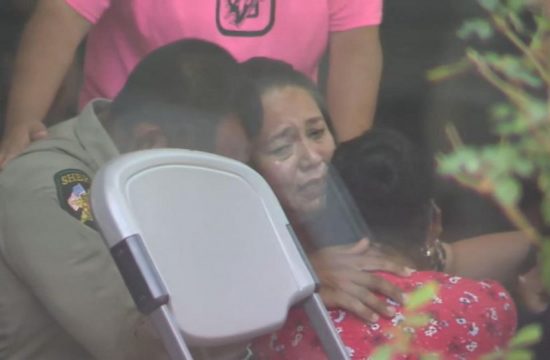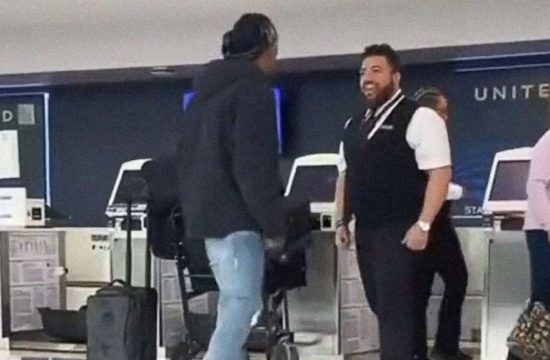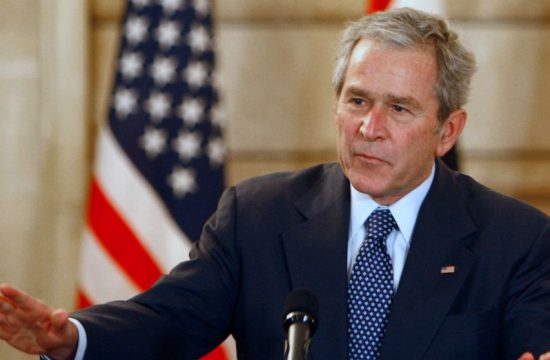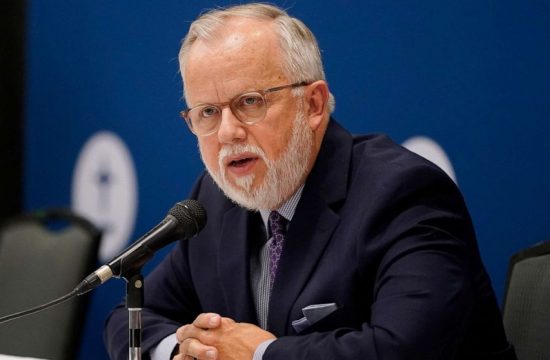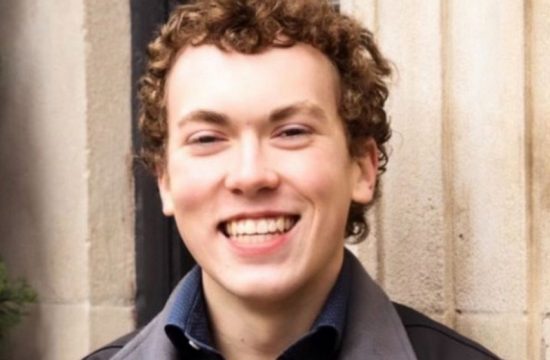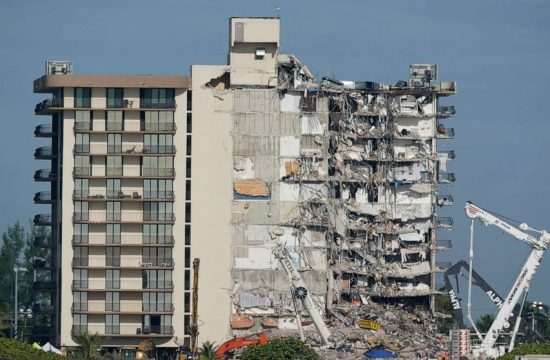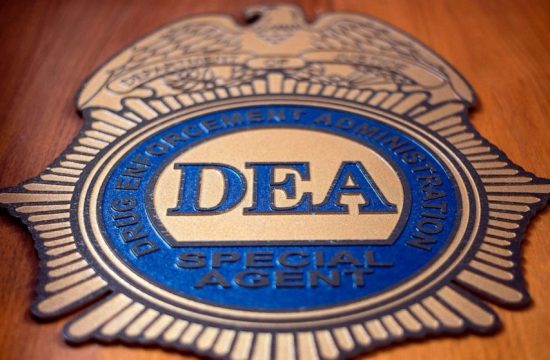With no end in sight for the United States’ coronavirus outbreak, which has now topped 5 million infections and 162,000 virus deaths — accounting for roughly a quarter of the world’s fatalities — many Americans are wondering if anything could help turn the tide.
The list of mistakes critics say the U.S. government has made is well-documented, including relying on a slow and patchwork state-led effort instead of a national plan; mixed messaging and politicization of key protective measures like masks; lack of testing and personal protective equipment for front-line workers; and decades-long defunding of America’s public health infrastructure.
Many state and local governments have similarly faltered in their coronavirus response, delaying restrictions, pushing reopening despite cases not being on the decline and wavering on requiring masks.
Now, half a year after the first confirmed COVID-19 infection was reported in the U.S., the country is contending with surging caseload, hospitalizations and deaths which only started to level off this week. July, however, had almost as many cases as the first six months of the year combined.
President Trump and the White House have pushed hard for reopening the country in the wake of the virus’ spring peak, arguing that the economic damage of the shutdown, including leaving millions unemployed, outweighed other considerations. They have also largely blamed the increase jump in cases on increased testing, which they touted along with early measures like restricting travel from China.
They also have said that states got the supplies that they needed, including ventilators and personal protective equipment (PPE), although governors have disputed that claim.
Dr. Robert Redfield, the director of the Centers for Disease Control and Prevention (CDC), which has also drawn criticism for being slow to ramp up testing in the early days of the outbreak, admitted that “there’s been mistakes,” in a previous interview with ABC News.
“Yes, we fail. We’re in it doing the best we can,” he said. “We’re trying to make the best judgements we can.”
Redfield also gave simple instructions for a way out. “This virus can be defeated if people just wear a mask,” he said.
Federal public health officials and state and local leaders have sent mixed messages on subjects like masking and who can and should get tested. The CDC, for instance, has been recommending mask-wearing since the spring, but initially suggested the general public didn’t need to do so.
President Trump, who was hesitant to wear a mask in public even as his public health officials insisted it was life-saving, began wearing one occasionally. Still, the administration has not issued a national mask mandate.
White House Deputy Press Secretary Judd Deere defended the administration’s response in a statement to ABC News.
“The White House Coronavirus Task Force is providing tailored recommendations weekly to every governor and health commissioner for their states and counties,” Deere said. “Local leaders are best positioned to make on-the-ground decision for their communities armed with CDC guidelines and best practices.”
“The United States will not be shut down again,” he added. “As the President has said, the cure cannot be worse than the disease.”
Despite the grim numbers, experts at Johns Hopkins, RAND and New York University contacted by ABC News did not view the situation as hopeless. There’s a way out, they said. But a COVID-19 escape hatch will require a degree of coordination and leadership they say appears to be in short supply among our nation’s decision-makers.
Here’s how four experts say they’d clean up the United States’ COVID-19 nightmare, if they were charge:
How would you rate the U.S. COVID response?
Dr. Amesh Adalja, senior scholar, Johns Hopkins Center for Health Security: From the start, there has been wide-scale evasion from the highest levels of government. The first U.S. steps solely focused on China in terms of who could be tested and included an unnecessary travel ban. The failure of testing capacity, which we still suffer from today has completely destroyed the outbreak response. In the early days, it was impossible for university and private labs to make test kits because we had to rely on a flawed CDC [Centers for Disease Control and Prevention] kit. Throughout the pandemic there has been a general attack on expertise in a touting of unproven medications to the detriment of evidence-based medicine.
Dr. Jennifer Bouey, epidemiologist, senior policy researcher at RAND: How the U.S., as the richest country in the world, and leader of global health for many decades, has failed so miserably was surprising to many public health professionals. Six months after the first COVID case, the virus is still roaming around freely in the U.S., causing 50,000 cases and over 1,000 deaths each day. This is mind-boggling. At least we have a reporting system and a transparency policy that can more or less provide an accurate picture of the epidemic. The treatment improvement and vaccine development are on track, but I am reluctant to call it “U.S.” response. It’s more a credit of scientists and physicians.
Cheryl Healton, dean, NYU School of Global Public Health: We’ve botched almost everything except for vaccine development.
Dr. Tom Inglesby, director of the Center for Health Security of the Johns Hopkins Bloomberg School of Public Health: The U.S. is clearly doing much more poorly than many countries in the world. Not just countries with similar levels of economic development, but also we’re doing more poorly than many smaller and less well-resourced countries.
What key policy changes would you make to turn the U.S. outbreak around?
Adalja: The most important change would be to allow the CDC to do its job and act unfettered. I would suggest that the White House step back from this. From the start, the CDC has had to express fealty to the president’s whims and unreality rather than the actual facts on the ground.
Inglesby: The progress we made early in the pandemic was lost in the following months. We need universal adherence to fundamentals like masking, physical distancing and hand hygiene, and no large gatherings. We also need clear, consistent and unified public health messaging from national and state governments. I’d shut down high-risk activities in places experiencing disease surges and if hospitals are in crisis, I’d implement stay-at-home orders for two weeks. I’d expand PPE [personal protective equipment] production and distribution and accelerate testing to shorten the turnaround time to one day.
Bouey: The premature opening and incoherent policy has wiped out the gains on the capacity of testing and tracing from the first widespread shutdowns. Now the virus is a wildfire, spreading freely in every corner of the country. I would propose a 90% shutdown of the whole country for three weeks. No travel, no work, no school, no going out unless for emergencies and health care. We wait out the virus cycle, then gradually reopen with intensive testing and tracing. We quarantine people who test positive and set up a sensitive surveillance system to identify hotspots. This would allow a semi-opening in two to three months (still no big gathering or bars) and relatively normal life with vigilance in six months.
Healton: We should shut down states with rising cases for two weeks to give the health system a breather and to lower the state’s baseline rate so that contact tracing is more viable. We should strictly adhere to the CDC reopening and pullback guidance with one modification — a national mandatory mask law.
What long-term action would you take?
Adalja: Pandemic preparedness has be prioritized in the same fashion as national security. This can’t be something that goes through a cycle of neglect and panic, but something that is sustainably funded and supported even when infectious disease emergencies recede from the headlines.
Bouey: I’d write public health funding, pandemic response and public health data tracing during a pandemic into law. We have to improve the infrastructure by building a consistent national medical record platform; linking travel records to health data; building a public health workforce; streamlining public-private pandemic preparedness partnerships; and moving critical manufacturing capability back to U.S. We need to shift leadership in a pandemic to experienced professionals.
Healton: The U.S. spends less than 1% percent of every health dollar on public health. We need to invest more, bring back the White House global pandemic team. We need to reinvigorate the CDC and cushion it from politicization. We need to address the delegation of public health to the local level and make explicit federal obligations and authority in a pandemic.
Is your plan realistic? What are the biggest obstacles to it?
Adalja: The biggest obstacle to my plan is the fact the politicians are short-range thinkers, who only think about the next election and not about the long-term consequences of their actions.
Inglesby: It’s all feasible if national and state leaders get fully behind it.
Bouey: Incompetent leadership, politicizing the pandemic and complacency are the biggest obstacles. We need leadership that can provide coherent, effective, science-based messaging to the U.S. public. That leader needs to provide the facts of the epidemic, lay out a plan and urge Americans to work together to fight the virus, instead of fighting each other. We have to stop congratulating ourselves, or blaming others, and face the reality that there’s a lot of work to do to restore public health and mend the health care system in this country.
Healton: The White House resistance and the public’s lack of understanding.
If your COVID-19 recovery plan were implemented immediately, where do you anticipate United States’ would be six months from now?
Adalja: We’d be thinking about pandemic preparedness strategically and actually implementing the systems needed to increase our resilience. I’d immediately remove restraints on the CDC. That would be a major short-term benefit for our national testing and public health communication strategies.
Inglesby: Many other countries have shown it is possible to bring disease down to very low level. It is possible.
Bouey: In my view, the only plan that can ensure a six-month virus containment will be a three- to four-week complete national shutdown, in a more restrictive way than last time, followed by testing, tracing, patient isolation and travel quarantine. In the short term it’s painful, but otherwise there’s no possibility of even half-opening for schools, businesses and gatherings.
Healton: The U.S. can sharply cut the infection rate, but only with with another shutdown in rising states. This makes both economic and public health sense. Without evoking emergency production capacity, we will not meet the CDC testing criteria, and thus cannot meet contact tracing guidelines.
Anything else you want Americans to know?
Healton: This is a national tragedy of epic proportion, and sadly, a national embarrassment, too. COVID-19 is not an equal-opportunity killer. Our racism is on stark display.
These interviews have been edited and condensed for clarity.
What to know about the coronavirus:
Tune into ABC at 1 p.m. ET and ABC News Live at 4 p.m. ET every weekday for special coverage of the novel coronavirus with the full ABC News team, including the latest news, context and analysis.


